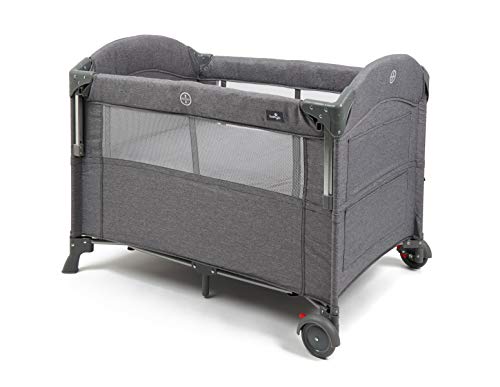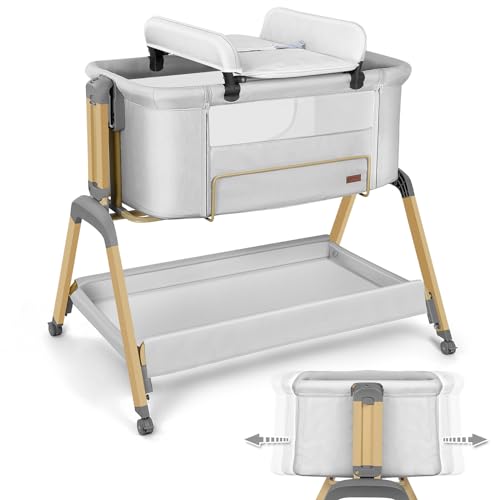The 10 Most Scariest Things About Cot Sales
작성자 정보
- Rhys Meece 작성
- 작성일
본문
 cot for sale Sales and Ambulance Services
cot for sale Sales and Ambulance ServicesCot sales are increasing because of higher birth rates and increased awareness about safety for babies. Many companies are also introducing new designs of cots that can be turned into day beds.
 A consistent and reliable method for the assignment of cot for sale designations is essential to ensure the accuracy of government pricing calculations. A clearly documented SOP along with an effective auditing process are important.
A consistent and reliable method for the assignment of cot for sale designations is essential to ensure the accuracy of government pricing calculations. A clearly documented SOP along with an effective auditing process are important.Demand for ambulances is increasing
The market for ambulance services in the world is growing rapidly due to the rising frequency of traumatic accidents and chronic health issues. These conditions are often accompanied with medical emergencies which require prompt and prompt intervention to save lives. This increasing demand underscores the importance to the public's health of having efficient emergency response systems, and easily accessible healthcare facilities.
Ambulances are special vehicles that transport patients to healthcare facilities and hospitals and provide vital out-of-hospital medical care during transit. The demand for these vehicles is fueled by a rising number of road accidents, an increasing number of seniors, and favorable reimbursement policies. In addition, the demand for air ambulances is also increasing due to an increasing need for rapid and reliable medical transportation over long distances.
Based on the service operator the market for ambulances is divided into hospital-based independent, and government. Hospital-based ambulance services are run predominantly by healthcare facilities and private companies. The independent segment, which comprises private-owned and operated air ambulances is projected to expand quickly over the forecast time. The government-operated sector, on contrary, is comprised of ambulances operated by municipal, state or military units.
According to the type of fuel the global ambulance services market is categorized into gasoline, diesel, and electric. The diesel segment is expected to earn the most revenue during the forecast time. The superior performance and reliability of diesel-powered ambulances is highly regarded by fleet managers. Furthermore, the fuel efficiency of diesel engines is improving thanks to technological advances. The growth of the diesel sector however, is slowed by strict emission regulations.
The emergence of new medical technologies is also driving the demand for ambulances. Telemedicine capabilities allow ambulances communicate with doctors and receive treatment instructions in real-time. These technologies can improve patient outcomes and decrease emergency department (ED) admissions and.
The global market for ambulance services is heavily dominated by North America, followed by Europe and Asia Pacific. The North American market is fueled by the demand for high-quality healthcare services, well-established healthcare infrastructure and favourable reimbursement policies. Furthermore, strategic endeavors by market organizations and the increasing the geriatric population of the region are also increasing the market's growth potential.
Growing expenditures in the healthcare sector
The healthcare sector is responsible for a significant part of the national economic activity. It also contributes to increase in productivity of workers and the development of human capital. Increasing expenditure in this sector is essential for the performance of the economy. However, it is not always easy to determine how health care spending impacts a country's economy. Numerous factors affect growth and health care spending. These factors can differ between regions and industries.
In the US, private businesses household, government, and private companies are the primary source of funding for health care. Private business and household expenditures are financed through premiums for private health insurance as well as out-of-pocket expenditures, and government program spending (financed through dedicated taxes or general revenue). Program spending by the government is a major driver in overall health spending trends. During the COVID-19 pandemic, government spending on non-hospital long-term care services grew significantly. Government programs account for more than a third of healthcare spending in the United States.
Health care expenditures are usually determined by the Gross Domestic Product (GDP). GDP measures a country's total economic output. In the case of health care, it refers to the production of products and services. A rising economy is associated with higher GDP and an increase in the number of jobs. It is therefore crucial to know how healthcare costs impact GDP as well as other economic indicators.
It is crucial to think about the impact of healthcare expenditures on economic performance when designing public policies and evaluating new health initiatives. Numerous studies have proven that investing in healthcare enhances the productivity of human capital, and improves economic performance (1 2, 3). However, these effects are not as simple and can vary according to the industry and population groups affected by the expenditure.
It is crucial to have a documented COT assignment process to ensure that prices paid by the government are consistent and accurate. Inconsistency could lead to inaccurate data, which may result in negative Medicaid Rebates, NFAMP, and 340B/PHS Ceiling Price. Inaccurate COT designations can also result in chargebacks, contract restrictions and other financial repercussions. To avoid these pitfalls it is recommended that a best cot beds assigning method be established based on manufacturer's SOPs and Cot Sale reference library.
The demand for convertible cribs is on the rise
As baby products get more sophisticated, parents are now willing to invest in their babies. This has led to an increase in demand for cribs which can be transformed into toddler beds or daybeds. These conversion kits are a great way to extend the life of a crib while also saving money. They also assist parents to avoid the last minute rush to find the right size bed for their child. In the coming years, demand for cribs of this kind will continue to grow.
The market for cribs and cots has been growing quickly due to the growing birth rates and standards of living around the world. The market covers a variety of essential baby care items like strollers monitors, cribs, and cribs. The demand for multi-functional, high-quality, and safe baby furniture is driven by the rise of nuclear families and working adults. Top brands like DaVinci Baby have multifunctional cribs that can be converted into toddler beds or full-sized bed. This allows parents to maximize their investment.
A lot of cribs are made from durable wood and metal, making them a good option for babies and young children. They are also easy to clean, which makes them an ideal option for families with busy schedules. Many are designed with safety features, for instance side guard rails that are built in and the mattress latch. Some have adjustable mattress heights to accommodate different ages.
Baby cribs and cots are sold in specialty stores and online distribution channels. They are also available in a broad variety of styles, ranging from modern to traditional. Some models even include features like sensorsSafe technology and airbags to boost safety and security. The use of eco-friendly products in the production process is also growing.
Considering that babies spend an average of two and a half years in their cots, they play a crucial part of their early development. This has prompted manufacturers to create new products that blend design with comfort and functionality. Cradlewise is one example. It offers an intelligent crib that utilizes artificial intelligence to adjust to the sleeping patterns of a baby. It also comes with an infant bassinet that offers comfort and security.
The demand for multifunctional cots are growing
The market for baby cots worldwide is expected to grow quickly, driven by the changing consumer preferences and technological advances. Regional dynamics also influence the market. For instance, Asian countries are a major contributor to the market's growth due to rapid urbanization and rising disposable incomes. Parents in these countries are looking for multi-functional products that are space-saving and offer convenience. Companies that align their product offerings to meet these needs will prosper in the marketplace.
Baby cots are becoming increasingly sophisticated, with manufacturers incorporating intelligent technology to enhance functionality and user-friendliness. A new generation of smart cribs, for instance, comes with IoT capabilities which let parents monitor their infants through their mobile devices. These advances make baby cots more attractive and adaptable, which boosts the demand for them.
A growing trend towards urban living has also increased the demand for multifunctional cots. Parents living in apartments are seeking furniture that maximizes space, and cots that convert into playpens or even adult beds are a popular choice for many consumers. Furthermore, safety is an important concern for many families and has led to an rise in demand for cots that meet stringent regulatory standards.
Consumers are also seeking multifunctional cots that offer stylish designs. Buyers, particularly parents with a millennial generation, are attracted to brands that emphasize quality and design. This group is more technologically savvy and research-oriented which has fueled the demand for furniture for babies that combines function with aesthetics.
Another factor that influences sales of cots is the changing economic climate where families are able to prioritize necessities when budgets are tight. Some manufacturers have responded by introducing low-cost alternatives, allowing them to compete with lower-cost competitors on the market. Additionally, the growth of e-commerce has altered purchasing behavior, allowing consumers to access a wider selection of baby items at affordable prices.
In the long term the multi-functional baby market for cots will continue to expand, driven by new trends and a rising emphasis on family-centered values. The market's growth could be hindered by challenges like fluctuating raw materials costs and intense competition. It is crucial that manufacturers continuously innovate and adapt to market trends.
관련자료
-
이전
-
다음
댓글 0
등록된 댓글이 없습니다.
